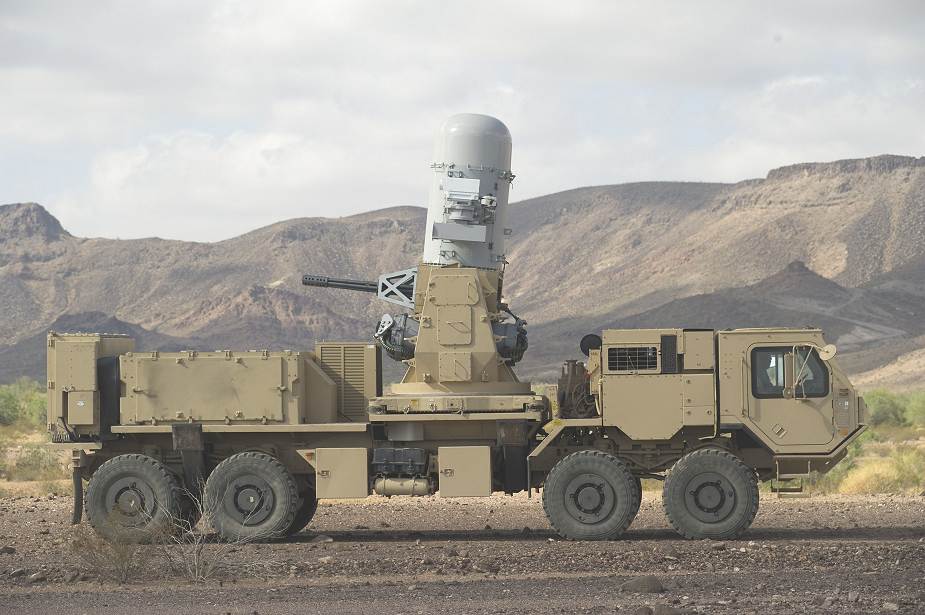SOURCE: AFI

In recent years, the escalating use of drones in modern warfare has transformed the security landscape along India’s volatile borders with Pakistan. The increasing frequency of Pakistani drone incursions, particularly along the Line of Control (LoC) and the international border in Punjab and Jammu, underscores the urgent need for India to develop or acquire a Counter-Rocket, Artillery, and Mortar (C-RAM) type system tailored to neutralize these aerial threats. Such a system would significantly enhance India’s ability to safeguard its airspace and protect critical military and civilian infrastructure from drone-based attacks.
Drones have emerged as a strategic tool for Pakistan, employed for both kinetic operations—such as targeted strikes—and non-kinetic activities, including smuggling drugs, arms, and counterfeit currency across the border. The 2021 drone attack on the Jammu Air Force Station, where low-flying drones dropped improvised explosive devices (IEDs), exposed vulnerabilities in India’s air defense against small, commercially available unmanned aerial vehicles (UAVs). More recently, during the 2025 India-Pakistan tensions following Operation Sindoor, Pakistan launched hundreds of drones, including Turkish-made models, to target Indian military installations across 15 locations, from Srinagar to Bhuj. These incidents highlight Pakistan’s growing reliance on drone swarms to test India’s air defense systems and gather intelligence.
While India’s Integrated Counter-Unmanned Aircraft System (C-UAS) Grid and air defense systems, including the S-400, Akash, and DRDO’s D4 (Drone, Detect, Deter, and Destroy) system, successfully neutralized many of these threats, the sheer volume and persistence of drone incursions reveal gaps in addressing low-flying, small-scale UAVs. Pakistan’s collaboration with Turkey and China to manufacture drones like the YIHA-III and Burraq variants further amplifies the challenge, as these platforms are capable of surveillance, precision strikes, and electronic warfare.
A C-RAM system, like the U.S. Phalanx or Israel’s Iron Dome, is designed to detect and intercept rockets, artillery, mortars, and low-flying threats with high precision and rapid response. Unlike traditional air defense systems optimized for larger threats like missiles or fighter jets, C-RAM systems excel at countering small, agile drones that operate at low altitudes and are difficult to detect with conventional radars. Such a system would complement India’s existing multi-layered air defense architecture, which includes the S-400 for long-range threats, Akash for medium-range, and Spyder for short-range engagements.
The advantages of a C-RAM-type system for India include:
- Rapid Response to Low-Flying Threats: Drones often fly below radar detection thresholds, making them challenging for systems like the S-400 or Akash. A C-RAM system, equipped with advanced radar and electro-optical sensors, can detect and engage these threats in real time.
- Cost-Effectiveness: Pakistani drone swarms aim to deplete India’s air defense resources by forcing the use of expensive interceptors. C-RAM systems, using directed-energy weapons or low-cost munitions, offer a more economical solution.
- Protection of Border Areas: Villages along the LoC and Punjab border frequently face cross-border shelling and drone incursions. A C-RAM system could protect civilian lives and infrastructure, reducing the psychological and economic impact of such attacks.
- Countering Swarm Tactics: Pakistan’s use of 400–500 drones in a single operation demonstrates a shift toward swarm tactics. A C-RAM system with automated tracking and multi-target engagement capabilities is critical to countering such large-scale incursions.
India has made significant strides in counter-drone technology. The DRDO’s D4 system, developed with contributions from labs in Bengaluru, Hyderabad, and Dehradun, uses radar, radio frequency sensors, and jamming techniques to detect and neutralize drones. It proved effective during Operation Sindoor, earning praise from U.S. warfare expert John Spencer for its role in neutralizing Pakistani drone swarms, including Turkish models. Additionally, the Integrated Counter-UAS Grid, combined with systems like the Akash and Israeli-made Spyder, has bolstered India’s defenses.
However, these systems are not specifically optimized for the rapid, high-volume interception of small drones at low altitudes. The 2021 Jammu attack revealed that sensitive installations like airbases lacked dedicated counter-drone measures at the time. While the D4 system is a step forward, it primarily relies on electronic jamming and spoofing, which may not suffice against advanced drones with anti-jamming capabilities. A C-RAM-type system, integrating kinetic solutions like auto-cannons or laser-based interceptors, would provide a more robust “hard kill” option.
India has the technological foundation to develop a C-RAM-type system indigenously. The DRDO’s success with the D4 system and the Akash missile demonstrates its capability to innovate. Upgrading existing platforms like the Schilka, which uses radar-guided 23mm guns, with modern fire-control systems and proximity-fuse rounds, could serve as a starting point. Additionally, Project Kusha, a DRDO initiative to develop a long-range surface-to-air missile system comparable to the S-400, could incorporate C-RAM functionalities.
NOTE: AFI is a proud outsourced content creator partner of IDRW.ORG. All content created by AFI is the sole property of AFI and is protected by copyright. AFI takes copyright infringement seriously and will pursue all legal options available to protect its content.